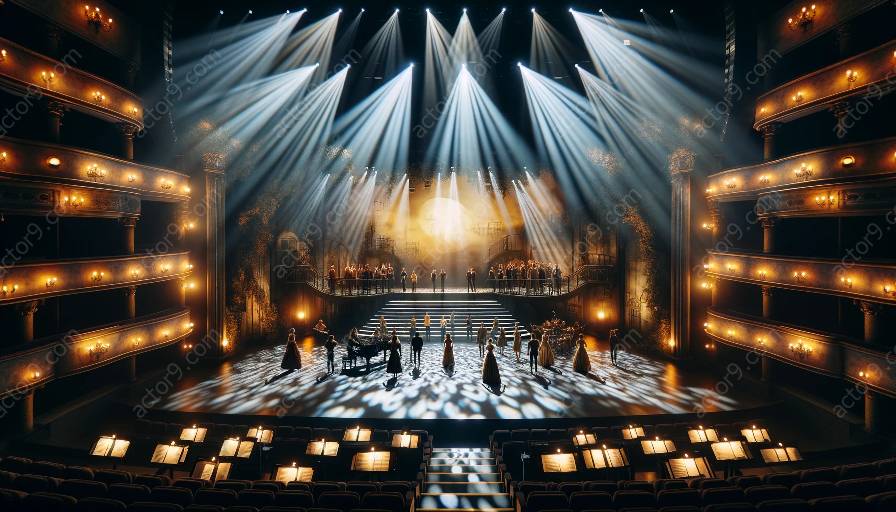Lighting design plays a crucial role in enhancing the visual and emotional impact of a musical theatre performance. It sets the mood, directs the audience's attention, and complements the performers' expressions, creating a mesmerizing experience for the audience.
Understanding the Role of Lighting Design in Musical Theatre
Lighting design in musical theatre is a critical element that contributes to the overall success of a production. It is a collaborative art form that works in conjunction with the scenic design, costumes, and choreography to effectively convey the story and evoke the desired emotional responses from the audience.
The Significance of Lighting Design in Musical Theatre
Lighting design serves various purposes in musical theatre, transforming the stage into different locations, time periods, and emotional states. It sets the tone and atmosphere for each scene, guiding the audience through the narrative and enhancing the visual spectacle of the performance.
Creating Atmosphere and Mood
One of the primary functions of lighting design in musical theatre is to create different atmospheres and moods for various scenes and musical numbers. By manipulating the intensity, color, and direction of light, lighting designers can transport the audience to a romantic sunset, a mysterious forest, or a vibrant party, all within the confines of the stage.
Moreover, lighting can be used to convey psychological states, such as hope, despair, excitement, or nostalgia, further immersing the audience in the emotional journey of the characters.
Directing Focus and Attention
Lighting design guides the audience's focus and attention to key elements on the stage, including performers, set pieces, and pivotal moments in the storyline. By strategically highlighting or shading certain areas, lighting designers can direct the audience's gaze and evoke powerful visual compositions that enrich the storytelling.
For instance, a spotlight on a solo performer can draw the audience into an intimate moment, while a dynamic wash of light across the entire stage can amplify the energy of a show-stopping musical number.
Enhancing Performances and Visual Storytelling
Lighting design contributes to the visual storytelling in musical theatre by enhancing the performers' expressions and movements. By illuminating the actors' faces, body language, and interactions, lighting design amplifies the emotional nuances of the characters and their relationships, allowing the audience to connect more deeply with the narrative.
Furthermore, creative lighting effects, such as color changes, projections, and silhouettes, add depth and dimension to the visual landscape, transforming the stage into a dynamic canvas that complements the thematic content of the production.
Technological Advancements and Innovations
In recent years, technological advancements in lighting equipment and control systems have revolutionized the possibilities for lighting design in musical theatre. LED fixtures, moving lights, and intelligent lighting consoles offer greater flexibility, precision, and creativity, allowing designers to achieve intricate lighting effects and seamless transitions that elevate the overall production value.
Moreover, the integration of video mapping, interactive lighting, and synchronized effects with sound and music has expanded the palette of visual storytelling, enabling designers to craft immersive experiences that push the boundaries of traditional stage lighting.
Collaboration with Creative Teams
Effective lighting design in musical theatre relies on close collaboration among the creative teams, including directors, choreographers, set designers, and costume designers. Through open communication and shared vision, lighting designers can align their creative choices with the overarching artistic concept, ensuring a cohesive and impactful visual presentation that harmonizes with the musical and theatrical elements of the production.
Ultimately, the synergy of lighting design with the performing arts, acting, and theater culminates in a transformative experience for both the artists and the audience, as the visual, emotional, and narrative dimensions converge to create a captivating spectacle that lingers in the hearts and minds of all who partake in the magic of musical theatre.




































